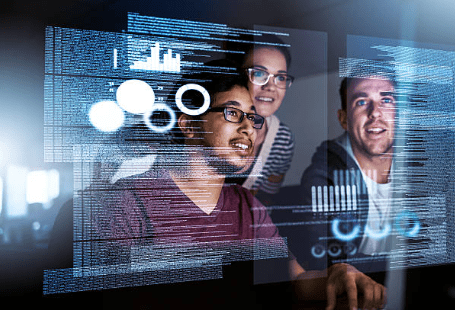
Converting pictures into text is in great demand among computer and mobile gadget users. According to the worldwide information base Wikipedia, text digitization is a necessity that may arise for office workers, students, designers, and anyone who constantly works with text and graphic content.
Text that is in the form of an image can only be read. You can not do without preliminary recognition if you want to edit it. The quality of this procedure determines the further successful work with the content.
Why translate images into texts?
In most cases, such work is done when you need to transfer data from traditional media. Even though the electronic exchange of information is becoming increasingly important, many companies are still at the stage of transition to full-fledged digital solutions. They still exchange paper orders and reports, often facing the need to digitize them.
Today, creating an electronic document or article is a relatively simple, quick procedure requiring a scanner or other machine capable of photographing a piece of paper with graphics and text. The scanning result is recorded in a particular file, the format of which will be graphic. Translation of the scanned image to text is done to simplify access and the ability to modify the existing text, as well as to store it in a convenient form and transmit it to any addressees without any restrictions.
Where is the best place to recognize text?
Both individuals and companies often face the problem of converting paper documents into a standard electronic format. For those who solve such a task for the first time, the question arises about how to perform it as quickly and qualitatively as possible. For this, it is best to go to a specialized site that allows the user to achieve such conversions as conveniently as possible.
It is enough to upload your document or article in graphic format to the converter to get the expected result. The program will analyze the provided file and translate all words and phrases into a universal format suitable for analysis, editing, and storage.
How do converters work?
Obtaining text from graphics has become possible thanks to the principle of optical recognition. One of the main tools of such programs is machine learning, which makes the whole process more efficient and accurate. The algorithm divides character patterns into numerous groups, accelerating the identification of letters created in graphics with their real prototypes.
The work of OCR programs that perform the necessary format change consists of such stages:
- entry;
- scanning;
- text fragment identification;
- reading strings, words, and characters;
- learning process;
- output of results.
Using sophisticated software systems that include automatic learning allows for suitable results. With such methods, even dim, blurred letters and objects with low resolution can be accurately matched.
Before processing the graphics, the recognition program starts a preparatory stage to improve all the image parameters. Filters affecting its contrast, brightness, and clarity are applied for this purpose. In addition, the initial version must be cleaned of unnecessary debris influencing further identification.
The graphics improved in this way are transferred to a particular segmentation program. The module detects structural parts of the processed article – lines, words, and individual letters. All of them are recognized, mainly by analyzing the contrasting color segments of the image.
The segmentation module organizes the data into a particular “tree”. Then, the classifier takes over. It analyzes whether the symbol belongs to one or another class. As a result, some variants of writing the same word are output.
The final stage includes correctly selecting variants and outputting the result into the appropriate format. The process mentioned above takes seconds, thanks to modern computer technologies, including fast processors and massive amounts of memory. After the specified time, the user will receive a file with recognized text ready for further processing.



